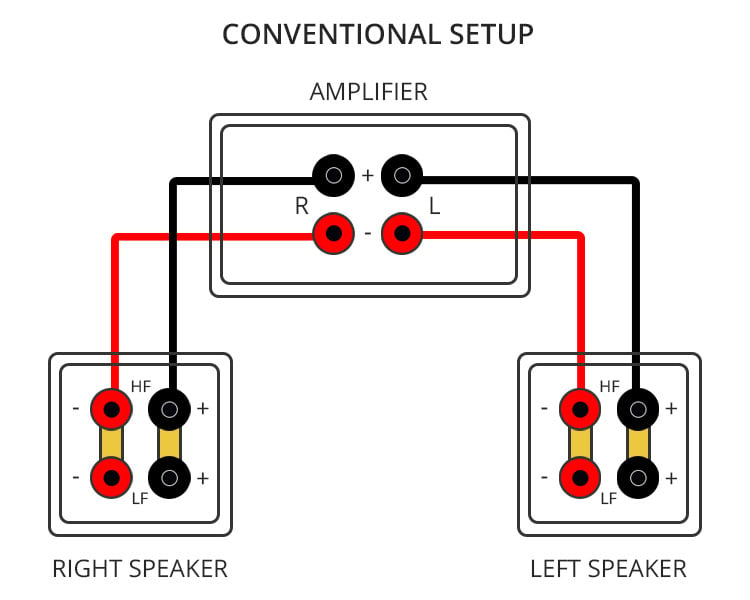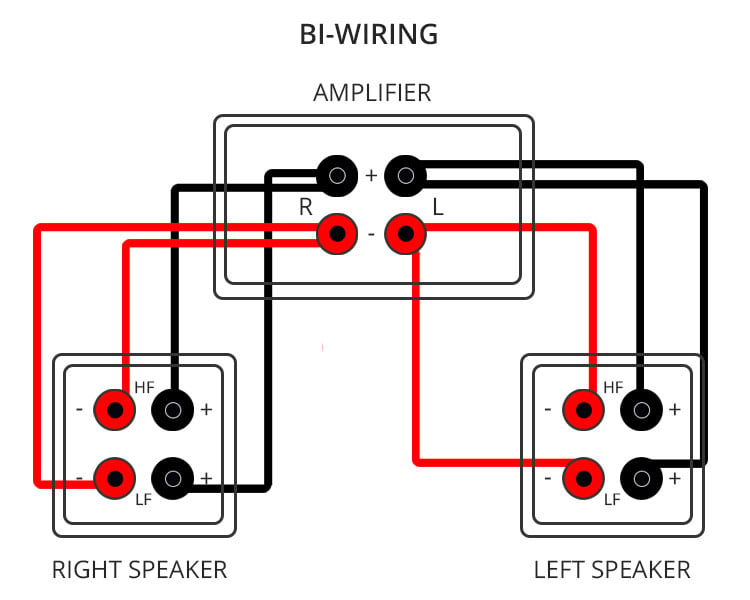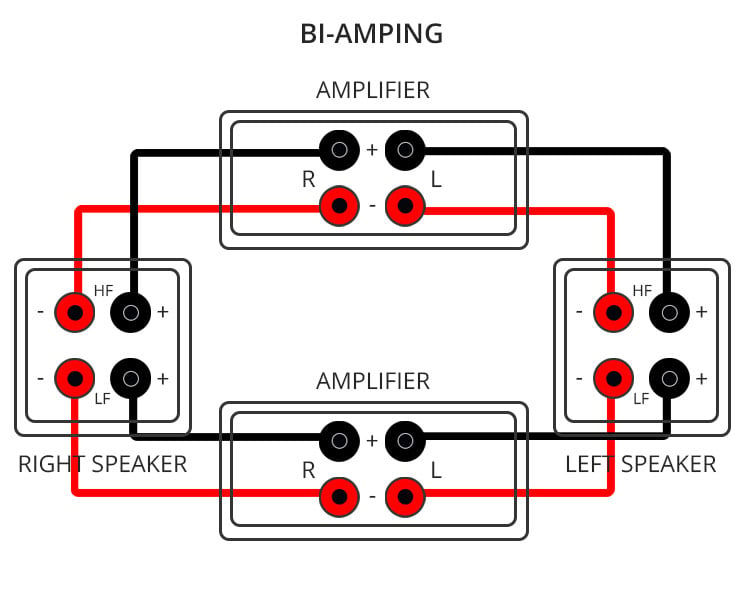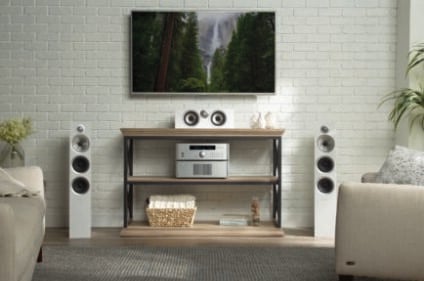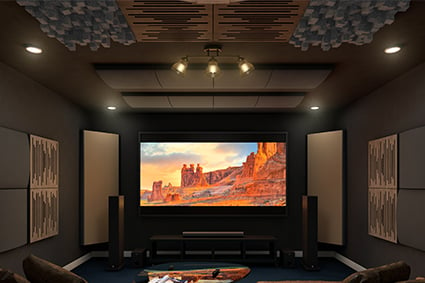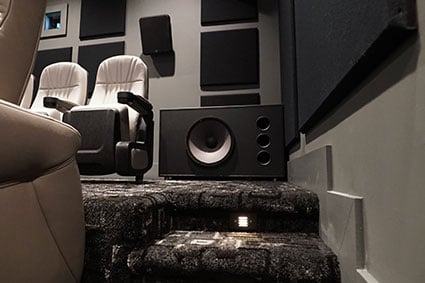Passive Bi-Amping
Passive bi-amping is what you typically see when bi-amping is discussed. It’s the most common. With Passive bi-amping, you are still using the crossover parts of your speaker to send the correct frequencies to each speaker driver.
Just like with bi-wiring, symmetry is super important with passive bi-amping, but it goes one step further. Your speaker cables need to be identical, the connecting audio cables that go to each amp should be identical, and finally, the amplifiers should be identical or from the same brand with the exact same specs in a couple of critical areas.
You may think, why can’t I get an amp for the treble that is different than the one for the bass? Remember, we are trying to improve our speakers, not change them. Every amplifier has a spec called input sensitivity. This is a number that gives you a representation of how much power it puts out with a certain level of incoming signal. If you have two amps with different input sensitivities that are being used to bi-amp, then either your bass or treble section of your speaker is going to play louder than the other, which is not good. The amplifier’s output impedance spec also affects how it reacts to your speakers. Our advice is to just play it safe - if you want to try bi-amping, make sure the two amps are identical. And remember- as we keep getting this question a lot, there is no possible way to bi-amp with two old stereo receivers or amplifiers, you just can not do it.
A few newer receivers and amplifiers on the market make this step pretty simple. In the setup menu, you can assign four amplifier channels for bi-amping, thus giving you 4 identical channels of amps that make it all work well.

